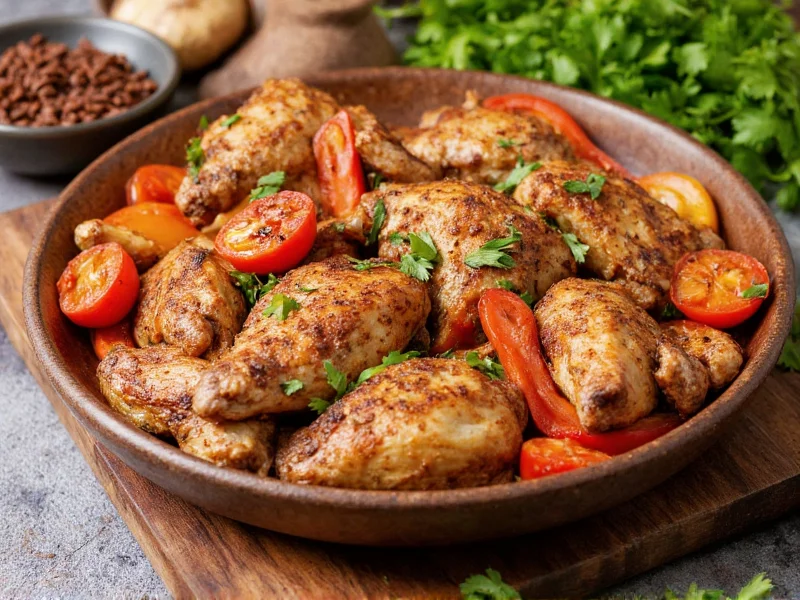Chicken's mild flavor makes it the perfect canvas for spice experimentation, but choosing the right combinations can transform an ordinary dish into something extraordinary. Understanding which spices complement chicken's natural qualities while enhancing your cooking method is essential for consistently delicious results.
Understanding Chicken's Flavor Profile
Chicken has a relatively neutral taste that readily absorbs surrounding flavors, making it incredibly versatile. The breast contains less fat than dark meat, requiring more careful seasoning to prevent dryness. When selecting spices, consider whether you're working with boneless breasts, thighs, or a whole roasted bird, as each cut benefits from slightly different approaches.
Essential Spice Blends for Chicken
Certain spice combinations have stood the test of time because they perfectly complement chicken's natural qualities. These foundational blends work across various cooking methods from roasting to grilling to pan-searing.
| Spice Blend | Key Ingredients | Best Cooking Method | Flavor Profile |
|---|---|---|---|
| Classic Roast | Salt, pepper, garlic powder, paprika, thyme | Oven roasting | Earthy, aromatic, slightly smoky |
| Mediterranean Herb | Rosemary, oregano, lemon zest, garlic, olive oil | Grilling, roasting | Bright, herbal, citrusy |
| Smoky BBQ Rub | Paprika, cumin, chili powder, brown sugar, garlic | Grilling, smoking | Rich, sweet, smoky, slightly spicy |
| Asian Fusion | Ginger, five-spice powder, garlic, soy sauce, sesame oil | Stir-frying, baking | Savory, aromatic, slightly sweet |
| Latin American | Cumin, coriander, chili powder, oregano, lime | Grilling, braising | Warm, earthy, citrusy |
Regional Spice Profiles for Chicken
Different culinary traditions have developed signature spice combinations that work exceptionally well with chicken. Exploring these regional approaches can expand your cooking repertoire while delivering authentic flavors.
Mediterranean Spice Combinations
Mediterranean cuisine relies on fresh herbs and bright citrus notes to complement chicken. Rosemary's piney flavor pairs beautifully with lemon zest, while oregano adds earthiness without overpowering. For optimal results when preparing what herbs go well with chicken in Mediterranean style, combine fresh rosemary, thyme, and oregano with olive oil and lemon juice. This mixture works particularly well for spice combinations for roasted chicken and grilled preparations.
Asian-Inspired Spice Blends
Asian cooking often features ginger, garlic, and five-spice powder as foundational elements for chicken dishes. The Chinese five-spice blend (star anise, cloves, Chinese cinnamon, Sichuan pepper, and fennel seeds) creates complex flavor layers that enhance chicken without overwhelming it. When determining Asian spices that complement chicken, consider adding a touch of sesame oil and soy sauce to your spice rub for pan-seared or baked chicken.
Latin American Flavor Profiles
Cumin and coriander form the backbone of many Latin American chicken seasonings, often combined with chili powder and citrus. For authentic best spices to season chicken breast in Latin styles, create a paste with cumin, smoked paprika, garlic, and lime juice. This works exceptionally well for chicken fajitas or grilled chicken skewers, providing that characteristic warm, earthy flavor profile.
Timing Matters: When to Apply Spices to Chicken
The timing of spice application significantly impacts flavor penetration and overall results. Understanding when to add spices to chicken can make the difference between superficially seasoned meat and deeply flavorful dishes.
For dry rubs, apply spices at least 30 minutes before cooking to allow flavors to penetrate. For whole roasted chickens, gently lift the skin and apply spices directly to the meat for maximum flavor absorption. When preparing how to season chicken for grilling, oil the chicken first, then apply dry spices to help them adhere properly.
For wet marinades containing acidic ingredients like citrus or vinegar, don't marinate chicken for more than 2 hours as the acid can begin to break down the proteins and create a mushy texture. Salt can be applied more generously and earlier than other spices, as it helps retain moisture during cooking.
Fresh vs. Dried Spices: What Works Best
While dried spices offer convenience and longer shelf life, fresh herbs provide brighter, more complex flavors for chicken dishes. Understanding the differences helps you make informed choices for best spices to season chicken breast and other preparations.
Dried herbs like thyme, oregano, and rosemary work well in rubs and roasted dishes because their concentrated flavors withstand high heat. Fresh herbs like cilantro, parsley, and dill are best added toward the end of cooking or as a garnish to preserve their delicate flavors. When substituting fresh for dried herbs, use three times the amount of fresh herbs, as dried herbs have more concentrated flavor.
Avoiding Common Seasoning Mistakes
Even with the best spices, improper application can ruin your chicken dish. Many home cooks make these common seasoning errors:
- Under-seasoning - Chicken requires more salt than many realize to properly enhance flavor
- Applying spices too late - Spices need time to penetrate the meat
- Mixing incompatible flavors - Avoid combining strongly competing flavor profiles
- Using expired spices - Old spices lose potency and can taste musty
- Overcomplicating blends - Sometimes 3-4 well-chosen spices work better than 10
For optimal results with spice combinations for roasted chicken, start with salt as your foundation, then add 2-3 complementary spices based on your desired flavor profile. Remember that less is often more when seasoning chicken.
Creating Your Own Custom Blends
Once you understand the fundamentals of what spices go best with chicken, you can begin creating personalized blends. Start with a base of salt and black pepper, then add one aromatic spice (like garlic or onion powder), one warm spice (like paprika or cumin), and one bright element (like lemon zest or fresh herbs).
When experimenting with new combinations, keep notes on what works and what doesn't. Consider the cooking method, accompanying ingredients, and desired flavor outcome. For example, a simple blend of smoked paprika, garlic powder, and a touch of brown sugar creates an excellent dry rub for grilled chicken wings.











 浙公网安备
33010002000092号
浙公网安备
33010002000092号 浙B2-20120091-4
浙B2-20120091-4